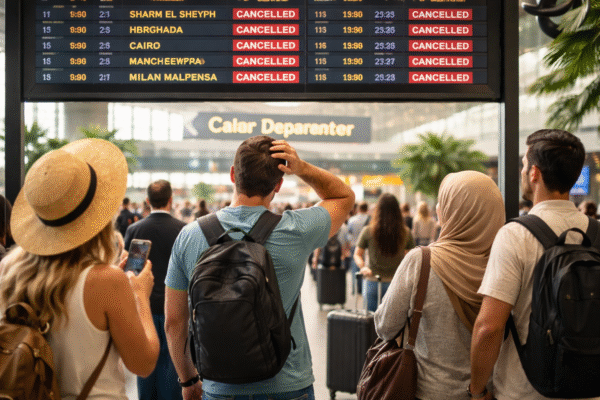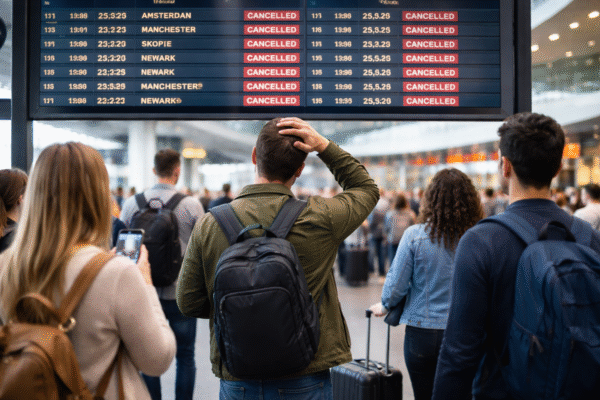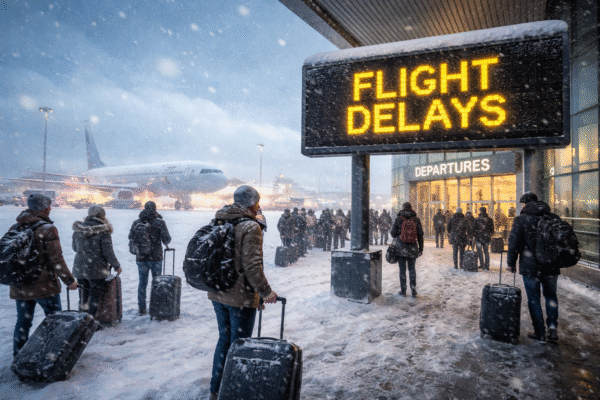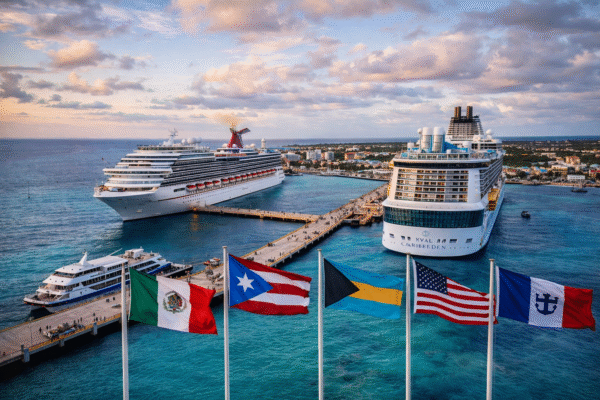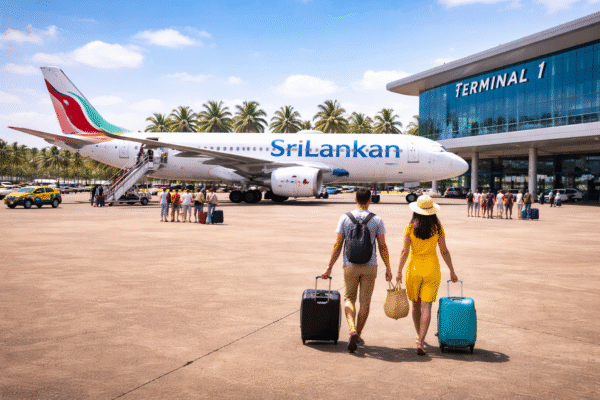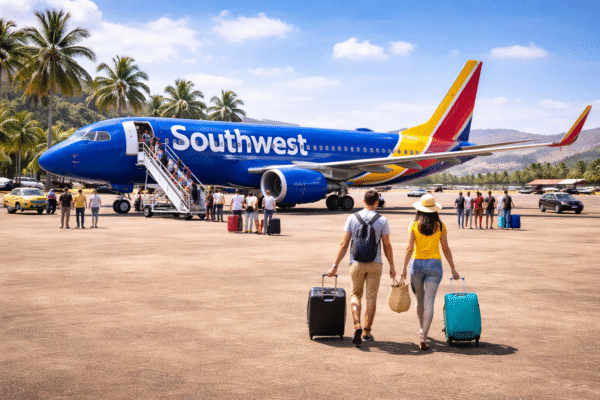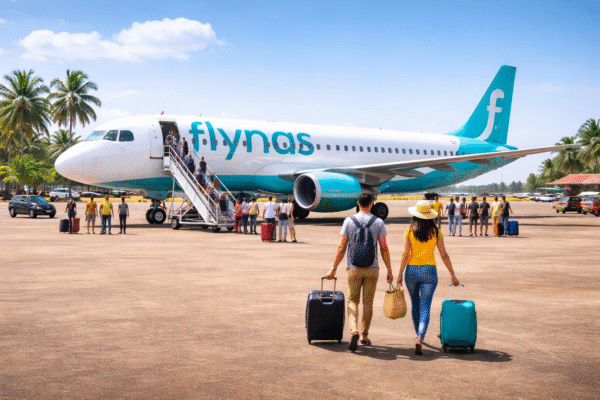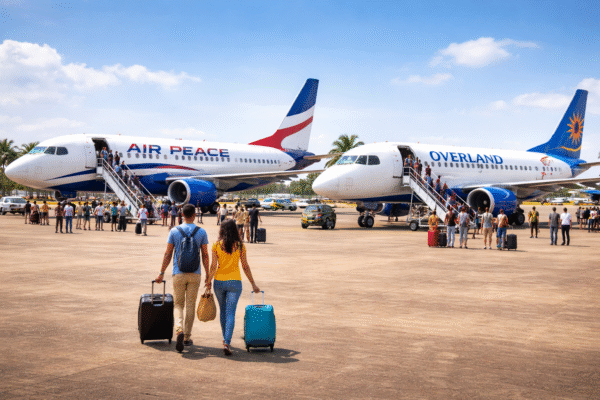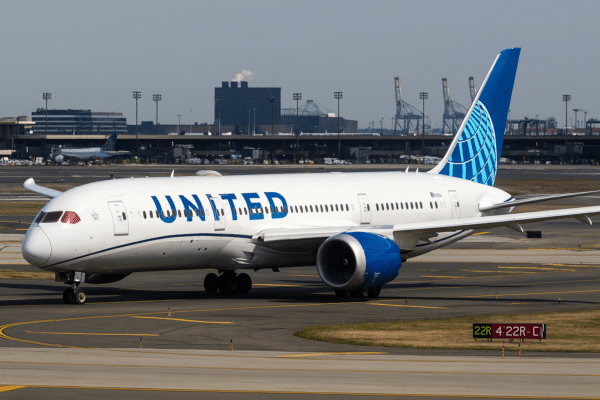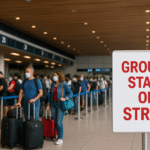The disruption’s epicentre was Newark Liberty International Airport, one of United’s most important transatlantic gateways. Multiple high-demand European routes into Newark were impacted, creating bottlenecks for travellers arriving from across the Atlantic.
Paris Charles de Gaulle saw two separate flights delayed — one operated by a Boeing 772 and another by a Boeing 763 — both bound for Newark. Berlin-Brandenburg’s service to Newark was also delayed, as was a Boeing 787-10 Dreamliner operating from Lisbon to Newark.
London Heathrow’s popular afternoon service to Newark, a key link for both business and leisure travellers, was caught in the delays as well. These disruptions were not confined to Europe, with a transpacific route from Taiwan’s Taoyuan International Airport to Honolulu also delayed, highlighting the far-reaching nature of the operational breakdown.
Pressure on North American Hubs
In North America, Houston’s Bush Intercontinental and Chicago O’Hare faced heavy strain. Several services between the US and Mexico experienced delays, including flights from Mexico City to Houston and San Francisco, as well as return services to Newark.
Within the domestic network, routes such as Chicago to Denver and Chicago to Houston were delayed, impacting onward connections and creating additional scheduling challenges across the airline’s system. Houston also saw delays to an unusual turn-around service, where a Boeing 753 was scheduled to depart and arrive back in Houston on the same day.
69 Delays in Addition to 12 Cancellations
While 12 flights were outright cancelled, the larger story was the 69 delays — impacting 2% of United’s global daily operations. Each delay created knock-on effects, from missed connections to rescheduled crew assignments, adding further complexity to an already strained network.
For passengers, these delays meant extended waits at gates, missed meetings, and disrupted holiday plans. With routes spanning multiple continents affected, the operational challenges quickly became a global issue.
Newark: The Core of the Disruption
Newark Liberty International Airport’s central role in United’s transatlantic network made it particularly vulnerable to cascading delays. Once key arrivals were pushed back, outbound departures faced limited aircraft availability, compounding the problem. As a hub connecting European, domestic US, and Latin American services, Newark’s congestion spread through multiple regions simultaneously.
Impact on Travellers
The lack of detailed explanations left many passengers frustrated. Business travellers heading to critical meetings, families on holiday, and those travelling for personal reasons all found themselves facing hours of uncertainty. For some, delays meant missed connecting flights and unplanned overnight stays.
Airline staff worked to rebook passengers, but the combination of high summer travel demand and network-wide disruptions meant limited available seats. In some cases, re-accommodation required routing through secondary hubs or rescheduling travel to the following day.
Broader Operational Challenges
While the airline did not detail the precise causes, “operational challenges” in the aviation industry can encompass a range of issues: adverse weather affecting key hubs, crew scheduling conflicts, aircraft availability problems, or unexpected technical inspections.
In interconnected networks like United’s, an issue in one region can quickly ripple across others. A delayed transatlantic flight, for example, may cause an aircraft to miss its next scheduled domestic service, which in turn delays another international departure.
Recovery Efforts Underway
United Airlines stated that it is working diligently to restore normal operations. Recovery strategies typically include rerouting aircraft, adjusting crew rotations, and deploying reserve planes where possible. However, the size of United’s network means such recovery can take time, especially when multiple long-haul and high-frequency domestic routes are affected.
Passengers scheduled to fly in the coming days are advised to check flight statuses frequently and allow extra time for potential delays. The airline’s customer service teams at affected airports are also assisting with rebooking, hotel accommodations, and meal vouchers where applicable.
Conclusion
The day’s events highlighted the challenges of managing a complex global airline network when disruptions occur. With 12 cancellations and 69 delays spanning Europe, North America, Latin America, and Asia, United Airlines faced one of its most challenging operational days of the year.
While the airline works to stabilise schedules, passengers are reminded to monitor their bookings closely. As hubs like Newark, Chicago, and Houston recover, travelers can expect gradual improvement — but also the possibility of residual delays in the days ahead.
For more travel news like this, keep reading Global Travel Wire





